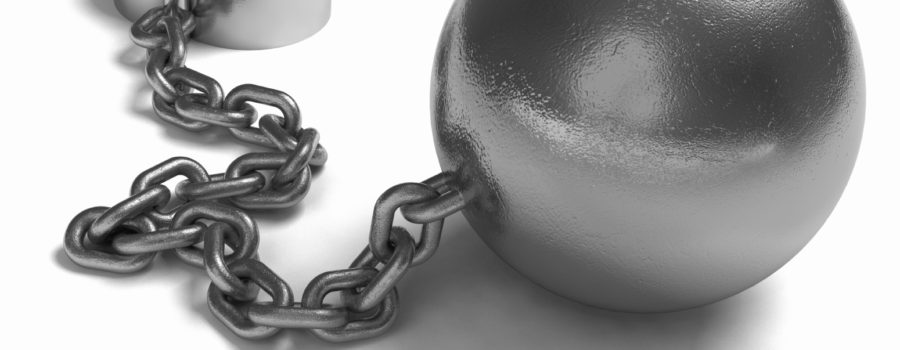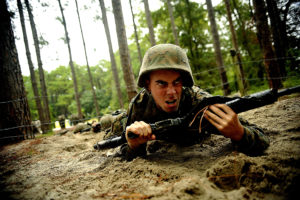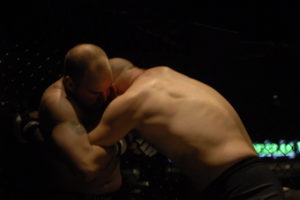Dating and creating relationships is a lot like swimming. We really want to enjoy the pleasant euphoria that swimming in fresh water provides, but we know there is a lot of lurking things in those waters. We know that the waters of relationships can drown you, as well as lift you up. There will be times where the water is more of a rapid than a wide, slowly moving river on a perfect, warm day. We know there may be piranha in the water, or copperheads, but we risk it, because we stay pretty aware and looking for those dangers.
However, we don’t often think about what we are taking into the water. There are plenty of posts about how to avoid the piranha and copperheads, and there are books, seminars, and websites dedicated to shooting the rapids successfully, but I haven’t read anything about what we wear. Primarily, what we don’t want to wear.
We would laugh at people who would wear a tux, we smirk at people that wear as close to nothing as possible. But there is something we wear much worse, that we may grow accustomed to in our day-to-day lives: the ball and chain around our necks.
From the safety of the shore, the privacy of our homes and bedrooms, and the quiet places of the temple or church (well, more quiet than a Metallica concert, anyway), the ball and chains we wear can become familiar, comfortable things. We actually grow accustomed to it as if it is actually a bauble or a fashion statement. Some even wear the ball and chain as if it is a Medal of Honor, or the current fad. However we deal with it, we are all wearing balls and chains, and we develop ways of working around them while not addressing them: of tolerating the inconvenience.
But take that ball and chain into the river of a relationship and it is a whole different story. It won’t matter if it is rapids or an ideal pond, it will drag you down and destroy you. Worse yet, you have a partner that loves you and wants to hold you up and support you as you are drowning, only to be dragged to the deep as well. No one, NO ONE can survive a ball and chain, set upon the neck, while trying to swim. If you enter rapids, it is even worse. At least in the pond, you are floundering and fighting for survival with a modicum of a chance of survival. In the rapids there is ZERO chance of survival. The ball will become stuck between rocks and keep you both submerged until death, then you will float away with the rest of the detritus stirred up.
What is this ball and chain? Your past. Your bitterness. Your misery. Your unwillingness to forgive and let go. Sometimes we become so accustomed and so damaged by the trauma of our past that the ball and chain becomes comfortable, a safe place. You can depend on the ball and chain to always be there, to always be present. You would rather wear that ball and chain because of the comfort and familiarity of it. You have developed muscle mass to drag it around. You have developed callouses to keep it from chaffing. As a matter of fact, you almost wouldn’t know who you were if you didn’t have it around your neck, weighing you down.
I know. I carried the ball and chain of sexual assault as a child. Of PTSD from abuse at the hands of family and a spouse, from experiences in law enforcement that still causes me sweats at night. The rejection of my peers for being ugly, being different, for being poor. My ball and chain was formed from links of the hardest stuff: violence, homelessness, rejection, rage, hatred, Godlessness. I earned every link. I was toned with the muscles of carrying the weight, and it became my identity. I know, because I formed the ball and chain to also protect myself.
What you have to realize is that yes, it is a weight and a fetter, but it is also a weapon – a flail. Wieldy, devastating, painful to all those that feel its crushing blow from the weight of my trauma.
But you wouldn’t take into the water to fight.
We have the power, though. We have two gifts that God has given us to free ourselves from our self imposed restriction. We have free agency, we have repentance.
We have choice, we choose to break the links. However, breaking these links is a difficult task. We forged them from the hardest stuff, but we also have an emotional attachment.
“What will I be without my hurt, without my pain?!”
At peace. Happy. Available for joy and love.
“How will I protect myself from hurt again without this flail?”
Sorry, but you will always be hurt. You will always be subject to pain. But instead of forming links, let it go. You can remember systematic hurt, like from the acts of an abusive spouse, but if you have someone that hurts you in the waters of a relationship, did they ask forgiveness and offer to lift you back up into the sun? If so, let it go, let it drift away.
We have the Atonement. Heavenly Father gave us the atonement to help us return to Him, but also as a defense from forming those links and attaching a ball. He said that He will forgive whom He will, but we are COMMANDED to forgive all – including ourselves. Especially ourselves. We are sinners, but through the Atonement we can be free of the weight of sin. He didn’t say forgive and remember and hold it against people until you feel ok. He commanded us to forgive and forget, because we will never feel OK holding on to it.
The excommunicated can serve as Bishops. The adulterous can have eternal marriage. The violent can have a loving life of peace. How? Because through the Atonement our sins are forgotten by Him and the Spirit, should we not do the same? Heavenly Father will let our sins go: are we more than He? No. In His perfect example, in the perfect example of His Son, dying on a cross, asking “Father, forgive them; for they know not what they do.” (Luke 23:34) he showed us that we are to do the same.
Forgive. Let go. Love.
Only by breaking our own bonds of memory and pain, through choice and forgiveness, will we be capable of truly loving someone else. Until then, you are loving a chunk of metal, strapped to your neck, intending on drowning you for the rest of your life.




